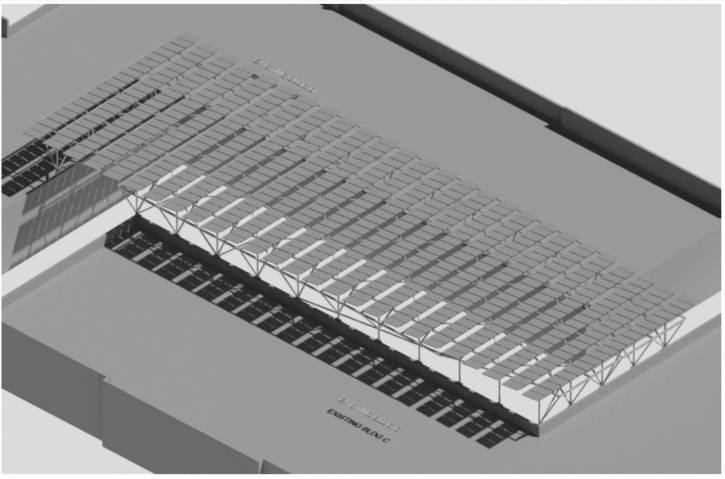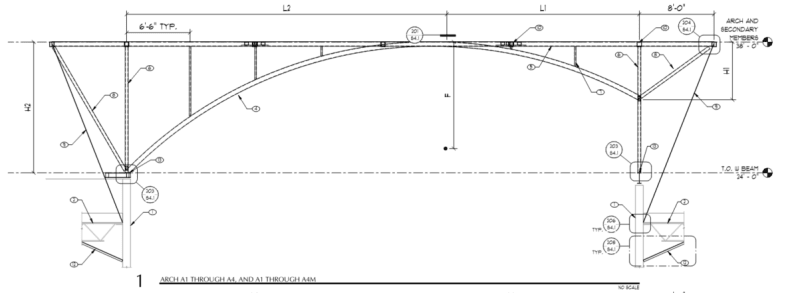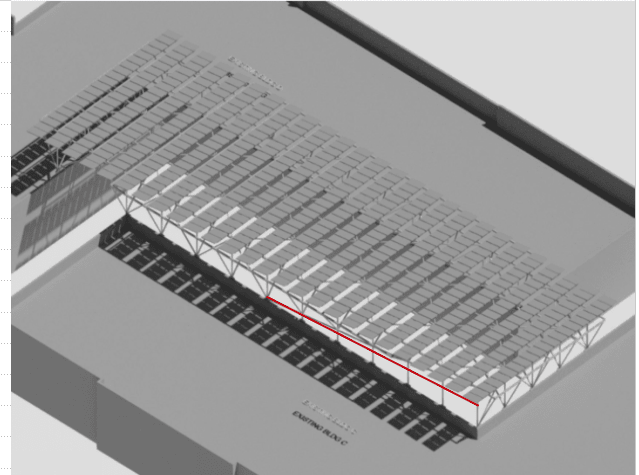First, the general questions:
I'm calculating solar panels over roofs in Phoenix, Arizona using ASCE 7-16 provisions, and am relatively new to using ASCE 7-16 for solar arrays. I'm calculating the LRFD average wind pressure normal to the panels to be around 35 psf to 40 psf. I'm determining the Normalized Wind Area using the area of a single solar panel (which results in a higher GCrn coefficient). Are my numbers within the ballpark, and does that approach sound correct?
Second, the specific questions:
ASCE 7-16 gives specific provisions for solar panels mounted on roofs over closed structures. The ASCE 7-16 commentary specifically excludes open or lattice roof structures supporting solar panels from these provisions.
I'm designing an open, lattice-type structure supporting solar panels, and my gut instinct is that it is conservative to use the ASCE 7-16 closed-structure provisions to calculate wind loads on these solar panels for this open structure. My questions related to this specific topic are:
1. Is it that truly conservative to use the ASCE 7-16 closed-structure wind provisions for all scenarios where an open, lattice-type structure supports solar panels?
2. Are there any thoughts regarding an appropriate reduction (or increase) in wind loads due to the panels being on open, lattice-type structures versus closed structures?
3. Any literature or studies you could point me to regarding calculating wind loads on solar panels supported by open, lattice-type structures?
Thank you
I'm calculating solar panels over roofs in Phoenix, Arizona using ASCE 7-16 provisions, and am relatively new to using ASCE 7-16 for solar arrays. I'm calculating the LRFD average wind pressure normal to the panels to be around 35 psf to 40 psf. I'm determining the Normalized Wind Area using the area of a single solar panel (which results in a higher GCrn coefficient). Are my numbers within the ballpark, and does that approach sound correct?
Second, the specific questions:
ASCE 7-16 gives specific provisions for solar panels mounted on roofs over closed structures. The ASCE 7-16 commentary specifically excludes open or lattice roof structures supporting solar panels from these provisions.
I'm designing an open, lattice-type structure supporting solar panels, and my gut instinct is that it is conservative to use the ASCE 7-16 closed-structure provisions to calculate wind loads on these solar panels for this open structure. My questions related to this specific topic are:
1. Is it that truly conservative to use the ASCE 7-16 closed-structure wind provisions for all scenarios where an open, lattice-type structure supports solar panels?
2. Are there any thoughts regarding an appropriate reduction (or increase) in wind loads due to the panels being on open, lattice-type structures versus closed structures?
3. Any literature or studies you could point me to regarding calculating wind loads on solar panels supported by open, lattice-type structures?
Thank you





